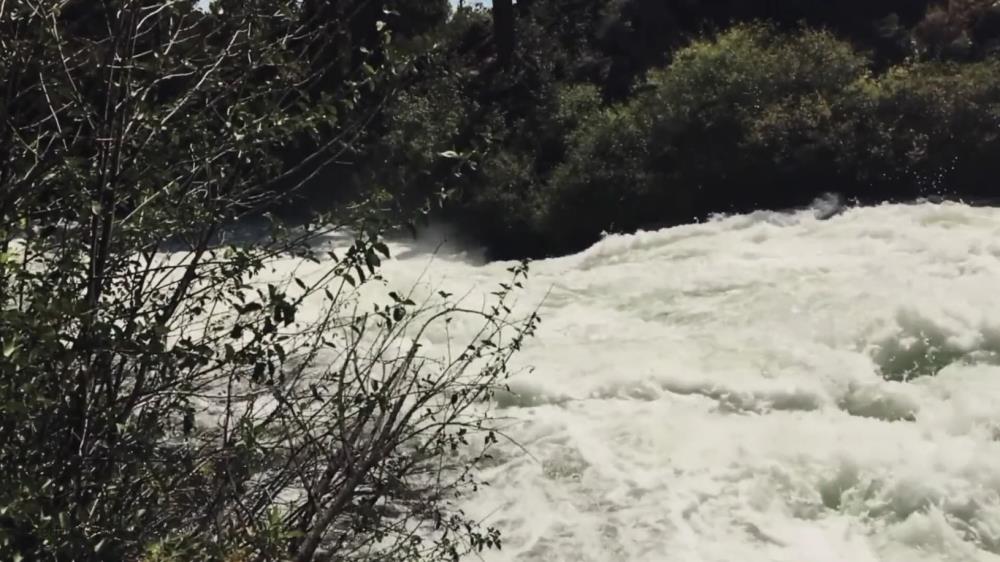
Related items loading ...
Section 1: Publication
Publication Type
Journal Article
Authorship
Fang, X., & Pomeroy, J.
Title
Diagnosis of future changes in hydrology for a Canadian Rockies headwater basin
Year
2020
Publication Outlet
Hydrology and Earth System Sciences, 24(5): 2731-2754
DOI
ISBN
ISSN
Citation
Fang, X., & Pomeroy, J. (2020). Diagnosis of future changes in hydrology for a Canadian Rockies headwater basin. Hydrology and Earth System Sciences, 24(5): 2731-2754, DOI:
https://doi.org/10.5194/hess-24-2731-2020.
Abstract
Climate change is anticipated to impact the hydrology of the Saskatchewan River, which originates in the Canadian Rockies mountain range. To better understand the climate change impacts in the mountain headwaters of this basin, a physically based hydrological model was developed for this basin using the Cold Regions Hydrological Modelling platform (CRHM) for Marmot Creek Research Basin (∼9.4 km2), located in the Front Ranges of the Canadian Rockies. Marmot Creek is composed of ecozones ranging from montane forests to alpine tundra and alpine exposed rock and includes both large and small clearcuts. The model included blowing and intercepted snow redistribution, sublimation, energy-balance snowmelt, slope and canopy effects on melt, Penman–Monteith evapotranspiration, infiltration to frozen and unfrozen soils, hillslope hydrology, streamflow routing, and groundwater components and was parameterised without calibration from streamflow. Near-surface outputs from the 4 km Weather Research and Forecasting (WRF) model were bias-corrected using the quantile delta mapping method with respect to meteorological data from five stations located from low-elevation montane forests to alpine ridgetops and running over October 2005–September 2013. The bias-corrected WRF outputs during a current period (2005–2013) and a future pseudo global warming period (PGW, 2091–2099) were used to drive model simulations to assess changes in Marmot Creek's hydrology. Under a “business-as-usual” forcing scenario, Representative Concentration Pathway 8.5 (RCP8.5) in PGW, the basin will warm up by 4.7 ∘C and receive 16 % more precipitation, which will lead to a 40 mm decline in seasonal peak snowpack, 84 mm decrease in snowmelt volume, 0.2 mm d−1 slower melt rate, and 49 d shorter snow-cover duration. The alpine snow season will be shortened by almost 1.5 months, but at some lower elevations there will be large decreases in peak snowpack (∼45 %) in addition to a shorter snow season. Declines in the peak snowpack will be much greater in clearcuts than under mature forest canopies. In alpine and treeline ecozones, blowing snow transport and sublimation will be suppressed by higher-threshold wind speeds for transport, in forest ecozones, sublimation losses from intercepted snow will decrease due to faster unloading and drip, and throughout the basin, evapotranspiration will increase due to a longer snow-free season and more rainfall. Runoff will begin earlier in all ecozones, but, as a result of variability in surface and subsurface hydrology, forested and alpine ecozones will generate the greatest runoff volumetric increases, ranging from 12 % to 25 %, whereas the treeline ecozone will have a small (2 %) decrease in runoff volume due to decreased melt volumes from smaller snowdrifts. The shift in timing in streamflow will be notable, with 236 % higher flows in spring months and 12 % lower flows in summer and 13 % higher flows in early fall. Overall, Marmot Creek's annual streamflow discharge will increase by 18 % with PGW, without a change in its streamflow generation efficiency, despite its basin shifting from primarily snowmelt runoff towards rainfall-dominated runoff generation.
Plain Language Summary
High-resolution Weather Research and Forecasting model near-surface outputs from control and future periods were bias-corrected by downscaling outputs with respect to meteorological stations in Marmot Creek Research Basin, Canadian Rocky Mountains. A hydrological model simulation driven by the bias-corrected outputs showed declined seasonal peak snowpack, shorter snow-cover duration, higher evapotranspiration, and increased streamflow discharge in Marmot Creek for the warmer and wetter future.
Section 2: Additional Information
Program Affiliations
Project Affiliations
Submitters
Publication Stage
Published
Theme
Presentation Format
Additional Information
IMPC, INARCH


 GWFNet
GWFNet Master
Master Data
Data Research
Research Map
Map
 Advanced
Advanced . . .
. . .

 Metadata Editor
Metadata Editor
 Record List
Record List
 Alias List Editor
Alias List Editor
 Legacy sites
Legacy sites